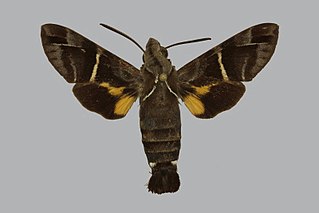
A narrow-gauge railway is a railway with a track gauge narrower than 1,435 mmstandard gauge. Most narrow-gauge railways are between 600 mm and 1,067 mm.

A standard-gauge railway is a railway with a track gauge of 1,435 mm. The standard gauge is also called Stephenson gauge, international gauge, UIC gauge, uniform gauge, normal gauge and European gauge in Europe, and SGR in East Africa. It is the most widely used track gauge around the world, with about 55% of the lines in the world using it.

Flounders are a group of flatfish species. They are demersal fish, found at the bottom of oceans around the world; some species will also enter estuaries.

A broad-gauge railway is a railway with a track gauge broader than the 1,435 mm used by standard-gauge railways.
In railway engineering, "gauge" is the transverse distance between the inner surfaces of the heads of two rails, which for the vast majority of railway lines is the number of rails in place. However, it is sometimes necessary for track to carry railway vehicles with wheels matched to two different gauges. Such track is described as dual gauge – achieved either by addition of a third rail, if it will fit, or by two additional rails. Dual-gauge tracks are more expensive to configure with signals and sidings, and to maintain, than two separate single-gauge tracks. It is therefore usual to build dual-gauge or other multi-gauge tracks only when necessitated by lack of space or when tracks of two different gauges meet in marshalling yards or passenger stations. Dual-gauge tracks are by far the most common configuration, but triple-gauge tracks have been built in some situations.

The Military Medal (MM) was a military decoration awarded to personnel of the British Army and other arms of the armed forces, and to personnel of other Commonwealth countries, below commissioned rank, for bravery in battle on land. The award was established in 1916, with retrospective application to 1914, and was awarded to other ranks for "acts of gallantry and devotion to duty under fire". The award was discontinued in 1993, when it was replaced by the Military Cross, which was extended to all ranks, while other Commonwealth nations instituted their own award systems in the post war period.

With railways, a break of gauge occurs where a line of one track gauge meets a line of a different gauge. Trains and rolling stock generally cannot run through without some form of conversion between gauges, leading to passengers having to change trains and freight requiring transloading or transshipping; this can add delays, costs, and inconvenience to travel on such a route.

Railways with a track gauge of 3 ft 6 in were first constructed as horse-drawn wagonways. The first intercity passenger railway to use 3 ft 6 in was constructed in Norway by Carl Abraham Pihl. From the mid-nineteenth century, the 3 ft 6 in gauge became widespread in the British Empire. In Africa it became known as the Cape gauge as it was adopted as the standard gauge for the Cape Government Railways in 1873, although it had already been established in Australia and New Zealand before that. It was adopted as a standard in New Zealand, South Africa, Indonesia, Japan, the Philippines, Taiwan, and Queensland in Australia.

Gauge conversion is the changing of one railway track gauge to another.

Railways with a track gauge of 5 ft 3 in fall within the category of broad gauge railways. As of 2022, they were extant in Australia, Brazil and on the island of Ireland.

Opsirhina lechriodes is a species of moth of the family Lasiocampidae. It is found in New South Wales and Victoria.
Charitosemia is a genus of moths of the family Noctuidae.

Macroglossum albigutta is a moth of the family Sphingidae. It is known from the Solomon Islands.

Opsirhina is a genus of moths in the family Lasiocampidae. It was erected by Francis Walker in 1855. All species in the genus were described from Australia.
Maua albigutta is a cicada species that is widely distributed in Sumatra and Peninsular Malaysia and has been recorded once from Borneo

The Gulf flounder is a species of saltwater flounder.
Eupithecia albigutta is a moth in the family Geometridae. It is found in the Himalaya and Taiwan.
Rhynchopyga albigutta is a species of moth in the subfamily Arctiinae. It is found in Peru.

Kathetostoma is a genus of bony fish from the family Uranoscopidae, the stargazers. They are demersal predators which are found in the western Atlantic, Pacific and Indian Oceans, with most species around Australia and New Zealand.








